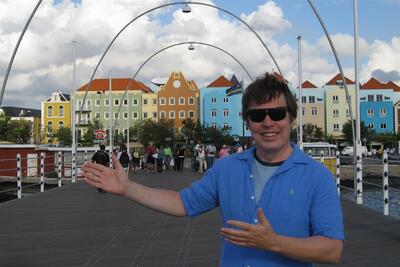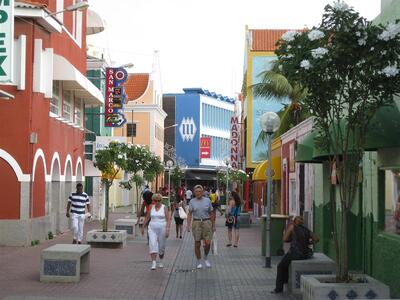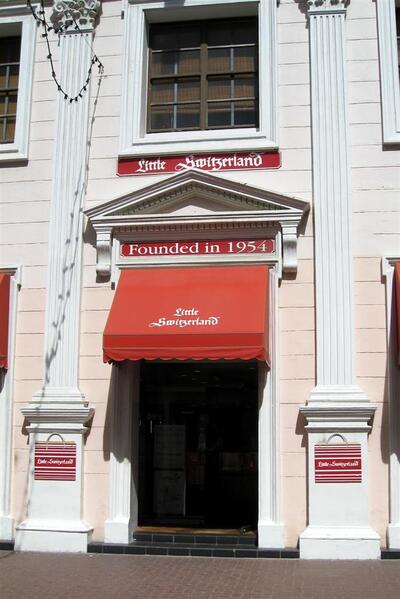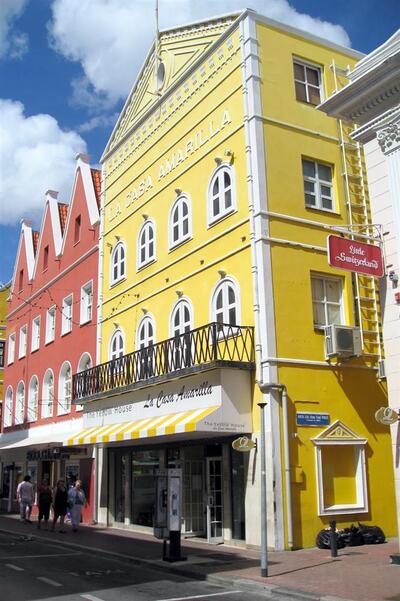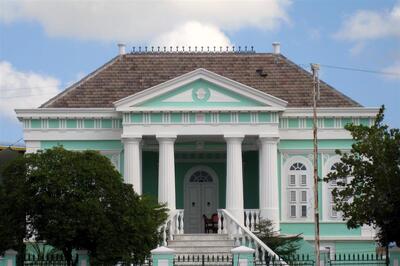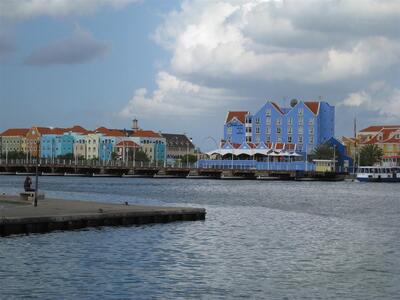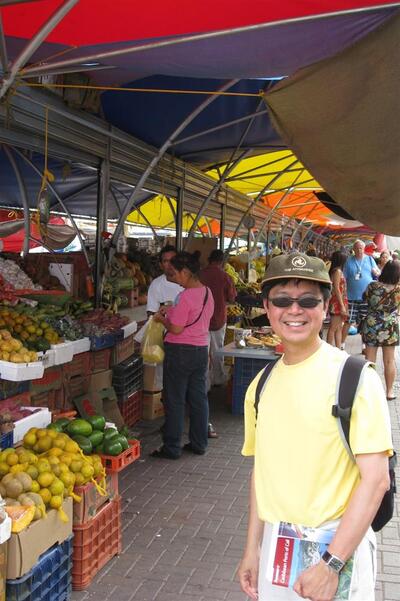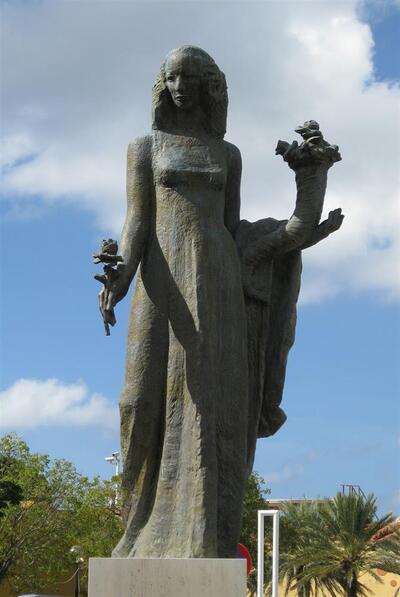Willemstad (Punda Side), Curacao
We had heard about the island of Curacao for a long time. We saw travel shows about it on TV with the Burt Wolf episode foremost among them. We knew about the strong Dutch influence in the country. When our ship docked at the port we knew right away we were going to have a good time exploring the city of Willemstad. Many people on board sounded very excited. Some even commented that it was the best port of call our ship was making. It was certainly helpful that the cruise ship terminal was right in the city center and that there was no need to take a shuttle or cab. We simply needed to walk much to our delight.
A partial view of the City of Willemstad, the Queen Emma Pontoon Bridge, and other cruise ships from Royal Caribbean and Celebrity docked right smack in the city center
Taken from the RIF Fort
RIF Fort was a large complex made up of upscale duty free shops, a hotel, and restaurants.
Here's a view of what was within the fort before everything opened in the morning and prior to rush hour.
My favorite duty free shop, Little Switzerland, had a branch here. Given that Curacao was a former colony of the Netherlands, the Dutch presence is very strong here. In fact, there were thousands of Dutch nationals around town when we arrived. Many of the stores in RIF Fort were owned and run by the Dutch.
There was one beautiful abstract painting of the Curacao countryside by an amateur Dutch painter in one gallery here. I inquired about the price just in case it was within my reach. However, it turned out to be $14,000.
This was the painting. Marc took a picture of it in the morning before the gallery even opened. He took the picture with the glass door in between the camera and the painting hence the blurriness.
The very historic and centuries old Penha Building is now an upscale department store selling American and European brands of clothes, shoes, and perfume on the Punda side of the city.
It was here inside the Penha Building where I had my first contact with a local. I spoke to her in Spanish when I inquired about a French men's cologne. It didn't surprise me though given the island's proximity to Venezuela and the South American continent. However, Dutch, Papiamento, and English were likewise spoken by many citizens of Curacao and I could hear them speaking in these languages in the open air market, the restaurants, and the museums.
The heart of downtown. Willemstad is a shopper's paradise. Everywhere you look, there are stores. The best buys for me here were the Swiss watches. I went to Macy's in Union Square prior to the cruise and I took note of the prices of the watches I hoped to buy in the Caribbean. I ended up buying two of the same brand which was featured and highly recommended in GQ magazine as one of the luxury Swiss watches there is. I bought one in yellow gold and another one in white gold. Who wouldn't, anyway? US prices were almost double the price. Here I was able to buy two for the price of one.
The Dutch influence in Curacao is strong without any doubt. I once spent an entire summer in the Netherlands back in the 1990s and it felt like I was in Europe here in this Caribbean island.
As far as I know, a botica is a pharmacy. As a child growing up in Manila and surrounded by relatives from Philippine provinces where Spanish was spoken widely, I often heard them talk of going to the botica to buy medicine. It is the very archaic form of saying pharmacy in Spanish. Everyone says "farmacia" now in modern Castillian.
I bought my very first luxury watch, a Gucci, from their branch in the French island of St. Barts, years ago.
This chain of boutiques is actually owned by Tiffany and Co. of New York which also has a branch in San Francisco's Union Square
On the day we docked in Willemstad, there were other cruise ships docked there too. With the arrival of cruise ships, come hordes of tourists ready to shop and shop.
Marc wanted to taste the Pastechi, a local dish, similar to the Filipino and South American empanada. We actually bought two and the food was indeed the Curacao version of our empanada or empanaditas as some Mexican families would call them. The US Dollar was widely accepted. We didn't need to change money into the local currency.
It was a medium sized synagogue and definitely worth seeing in the island.
Notice that the floor here was completely covered with sand just like the one in St. Thomas, US Virgin Islands
I never realized we'd see so many Jewish temples in the Caribbean. We saw one in Barbados, another one in the US Virgin Islands, and now in Curacao.
Time to take the ferry to go to the Otrobanda side of the city.
There were ferries that took people regularly from the Punda side of town to Otrobanda and vice versa. I believe the ride was free and quick. The ferry ride was one option to cross town should one decide not to go where the Emma Pontoon Bridge was and then cross.
Taken aboard ferry right before the quick canal crossing to Otrobanda. Take a load of the school of fish which can be seen from the crystal blue waters of Curacao. Impressive, huh?
Next stop, the Otrobanda side of Willemstad












